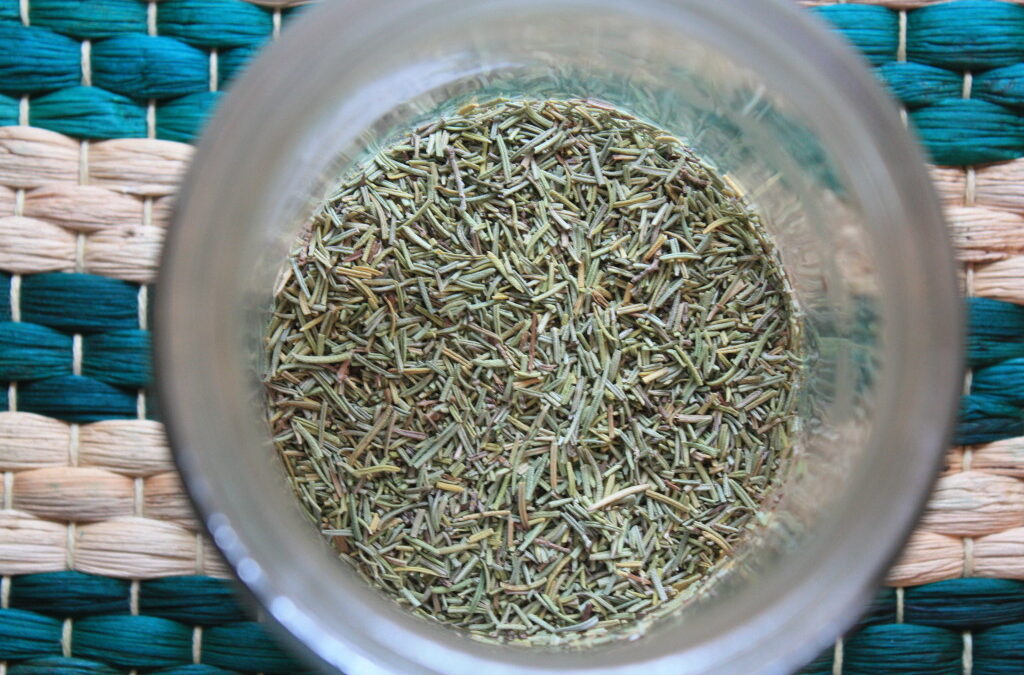
by Dr. Talia Marcheggiani, ND | Aug 25, 2015 | Botanical Medicine, Cold and Flu Remedies, Detoxification, Digestion, DIY, Fertility, Herbalism, Hormones, Medicine, Mental Health, Mind Body Medicine, Recipes, Skin health, Women's health
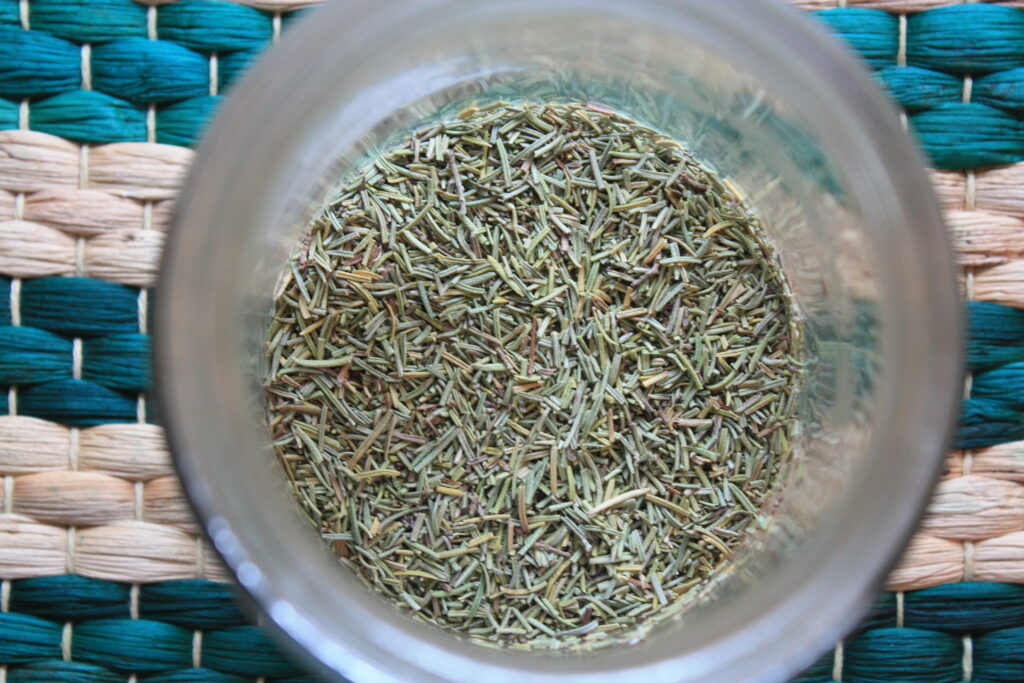
As a student of naturopathic medicine, I didn’t quite get herbs. They were natural, sure, but why would I prescribe them in lieu of homeopathy, dietary changes or nutritional supplements? I didn’t get it.
I liked herbs; I understood the idea of synergy—the fact that the effect of the entire plant is greater than the sum of its parts. Also, I knew that plants often have superior effects to some drugs in that they often contain active ingredients that balance the side effects otherwise caused by most pharmaceutical medications. For example, anti-inflammatory herbs like turmeric and licorice root also support and strengthen the immune system, rather than suppress it, as most anti-inflammatory drugs tend to do. For most drugs that lower inflammation, a common side effect is severe immune deficiency. This is not the case for herbs that lower inflammation, which actually benefit the immune system. So, I knew herbs were cool.
I also liked the idea that each tincture was individually created for the totality of symptoms a patient presented with. Creating a specific medicine for each individual seemed to fit with the idea of singularity in medicine, which I resonated with. However, for a long time I didn’t get herbs. And I’ve often been reluctant to prescribe herbs in my practice.
First of all, I don’t have my own dispensary so sending patients off to buy tinctures created a kind of disconnection from the source of my prescriptions. Secondly, as many of you who have tried it can contest, tinctures (or herbs extracted in alcohol) taste terrible and make compliance hard, even for myself. Thirdly, tinctures are quite expensive. Each 50 ml of tincture can cost upwards of $5 making a month’s supply of herbs quite costly. This is funny because many of the herbs that are so costly to buy grow like weeds in southern Ontario (dandelion, for example, is often considered a weed) and tinctures aren’t that difficult to make. Fourthly, I didn’t like to prescribe tinctures because, as I understood it, people would only feel better while actively taking the herb. In my mind, the herb worked like a drug in that once you stopped taking it, the positive effects would diminish. This differed from my understanding of homeopathy, which stimulates the body to heal itself, correcting nutritional deficiencies or looking for and treating the root cause of symptoms. I doubted whether the way we were taught to prescribe herbs did in fact treat the root cause. This is important because the guiding principles of naturopathic medicine dictate that we aim to do this whenever possible.
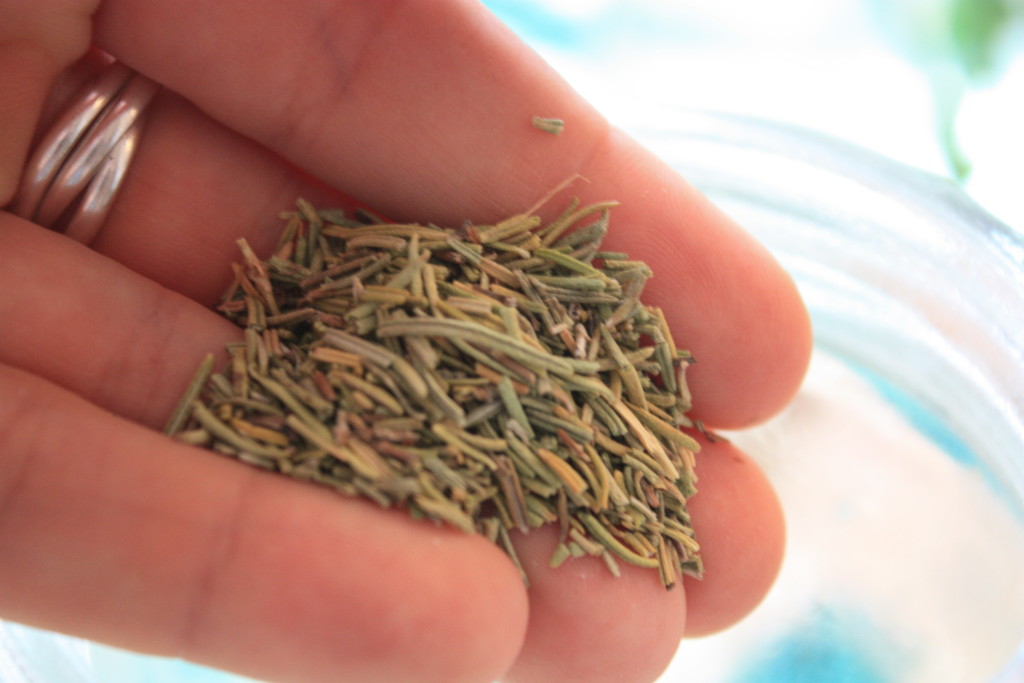
I had no doubt, however, that herbs were effective. Taking a tincture seemed to be far more effective for me and the patients I treat than taking supplements. Herbs are nutritional—they are a food and a medicine and therefore contain a myriad of health benefits beyond treating what they are prescribed to treat.
It wasn’t until I read author and herbalist Matthew Wood’s works on herbalism that I began to internalize the idea that herbs do in fact stimulate the body to heal itself. Plants contain an inherent wisdom, according to Wood and his studies in western and Native American herbalism. Plants eradicate disease by stimulating the healing powers of the body and strengthening the body’s capacity to heal itself from disease. The body is constantly trying to heal itself from ailments and, when these processes become blocked for one reason or another, disease symptoms begin to manifest. Herbs can strengthen the body’s healing processes, when prescribed in a certain way, and large doses for long courses of time are not necessary. Further, once the disease is eradicated, the herbs can be stopped. When prescribed as a healing catalyst, disease doesn’t return once the herbal prescriptions have done their work.
Wood writes, “It should be understood that herbs can be used either way: to stimulate the self-healing powers of the organism to return to health, or to artificially manipulate the organism to fit an artificial goal.” He uses the examples of goldenseal, which at high doses can kill bacteria or viruses that have invaded the body and in smaller doses can increase the mucosa and digestive systems of the body to rid itself of the invaders and, in turn, strengthen the body against future invasions.
In regards to the cost of herbal tinctures, there are relatively simple ways to get the effects of herbs by making your own tinctures.
Read on to support liver detox, hormonal health and cardiovascular health by creating your own rosemary tincture using dried rosemary, one of my favourite herbs of the moment, and a bottle of white wine:
Rosmarinus officinalis, is the latin name for rosemary, a member of the mint family. While better known for its ability to perfectly complement roast chicken, it has a number of health benefits. Rosemary’s energetic actions are stimulating and warming, according to Matthew Wood. It clears up phlegm and dampness, stagnation and sluggishness in the tissues.
Rosemary has the ability to boost metabolism and increase the absorption of sugars and fats, which make it an appropriate nutritional supplement for people with diabetes. It can help drive glucose into the cells, diminishing the need for the body to release large amounts of insulin, re-sensitizing cells to insulin and lowering blood sugar. It can help nourish the entire body and has a special affinity for the heart, lungs, spleen, liver and kidneys.
Rosemary is currently often used to detoxify toxic, exogenous estrogens from the body while promoting the conversion of health-promoting estrogens in the liver. It is a powerful stimulator of liver detoxification. It therefore serves as a cheap and useful remedy for seasonal, full-body detoxes or coming off oral contraceptive or synthetic hormones, such as the fertility drugs given before IVF treatments. It is also useful for promoting circulation and lymphatic drainage, moving sluggishness and excess weight and creating warmth and vitality in the body’s circulatory systems.
Herbalists use rosemary tincture or oil applied topically to the head and neck to treat migraines from tense shoulder and neck muscles. Its scent is aromatic and stimulating and can improve memory and cognition. It is an effective remedy for mental-emotional depression when taken internally, especially where patients feel damp, sluggish, lack motivation and experience feelings of mental dullness.
As a digestive aid, rosemary can help relieve abdominal bloating and flatulence. It also helps stimulates appetite. It helps burn up phlegm in the stomach and can aid in weight loss.
In addition, rosemary contains antimicrobial properties, meaning it can be used to kill bacterial and viral infections, especially when taken at the beginning of a cold.
It is a powerful heart tonic, especially where there is edema and circulatory stagnation, such as early signs of congestive heart failure. It also can help with arthritic pains and joint stiffness when applied topically to joints or taken internally as an anti-inflammatory.
In Matthew Wood’s book, The Practice of Traditional Western Herbalism, he recommends creating a rosemary infusion (infuse fresh leaves and flowers in a pot of boiled water and keep covered) or a tincture using white wine as the alcohol base.
A few days into taking this tincture (mixed with a little water to dilute the strong taste), I’ve noticed my skin clear, my digestion improve, my stomach flatten (I no longer have any bloating and I’ve been experimenting with eating wheat again for the first time in years), and my energy increase. My symptoms of PMS this month subsided before my period even came. I had a canker sore in my mouth that immediately went away once I started taking rosemary wine. I’ll certainly be adding this cheap and effective DIY remedy to my self-care and general health-promoting regime.
Here’s how to make your own.
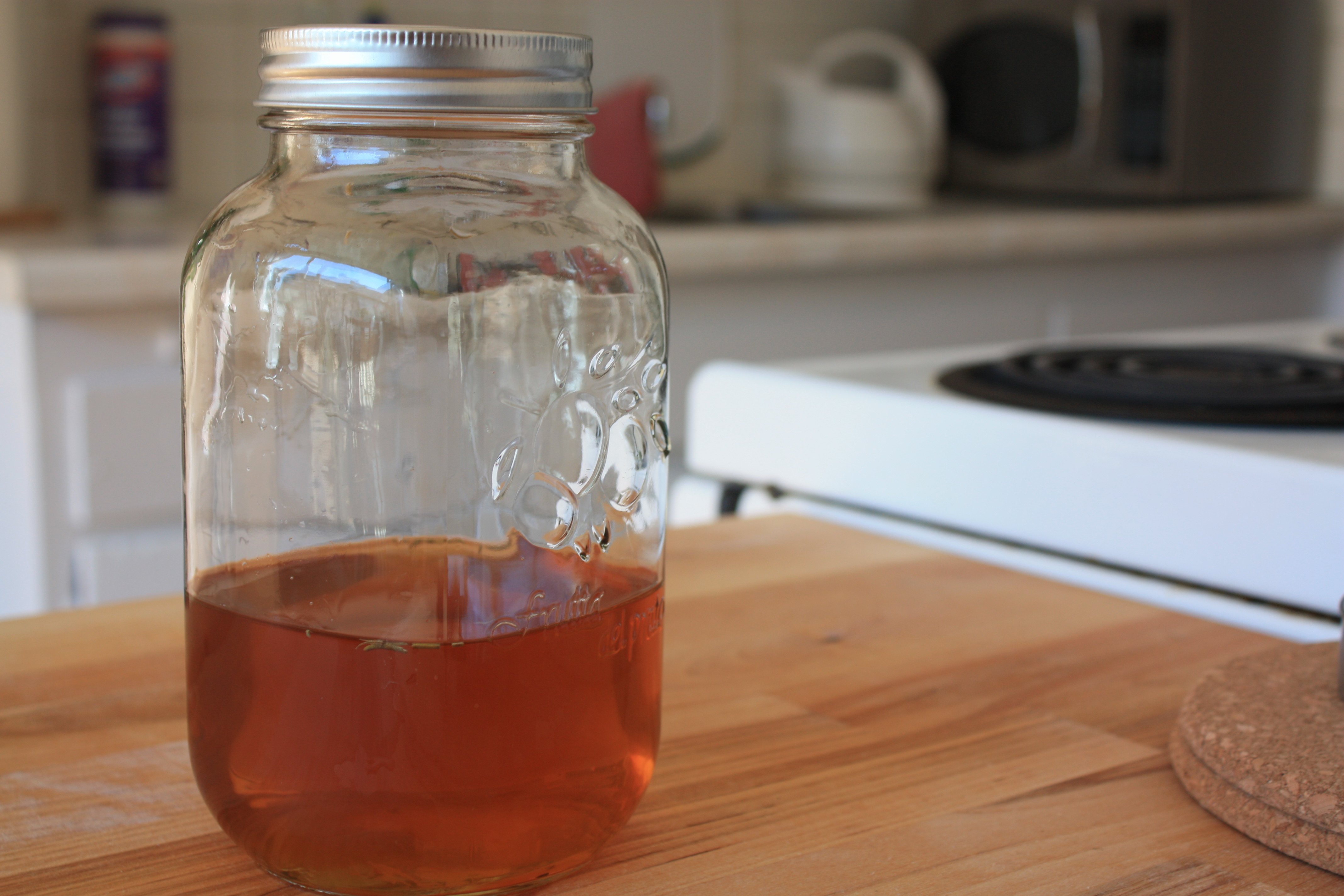
Rosemary Wine:
Ingredients:
1 handful (approximately 250 ml) of rosemary leaves, dried, cut up as small as possible (you can use a packet of rosemary spice from the grocery store). Extra points for organic.
1 bottle (750 ml) of white wine (Wood recommends a good quality wine, I used a cheap homemade one I was given as a gift).
1 empty glass bottle/jar
Directions:
Put rosemary in the empty glass jar. Pour entire 750 ml bottle of white wine over rosemary and let stand in a cool, dry place for 2-3 days. Then strain out the herbs and store the liquid tincture in a cool, dry, dark place, like a cupboard.
Talk to your naturopathic doctor about appropriate dosing, though most botanical prescriptions involve 1 tsp of tincture 2-3 times a day away from food. This will vary according to your health challenges and health goals, among many other factors.*
Reference:
Wood, Matthew. 2004. The Practice of Traditional Western Herbalism: Basic doctrine, energetics and classification. Berkeley, California: North Atlantic Books.
*This article is not to be confused with medical advice from a licensed naturopathic doctor. If you suffer from one of the above-mentioned conditions and believe rosemary might help, please book an appointment to receive an appropriate assessment.
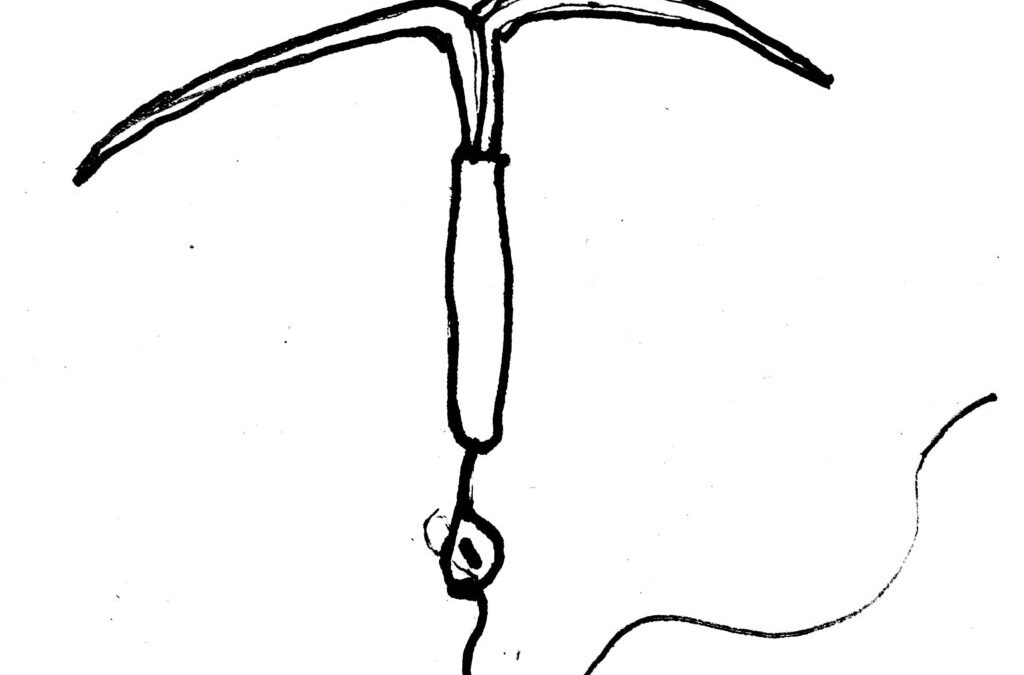
by Dr. Talia Marcheggiani, ND | Jul 31, 2015 | cancer, Detoxification, Endocrinology, Fertility, Health, Hormones, Preventive Medicine, Sexual Health, Weight Loss, Women's health
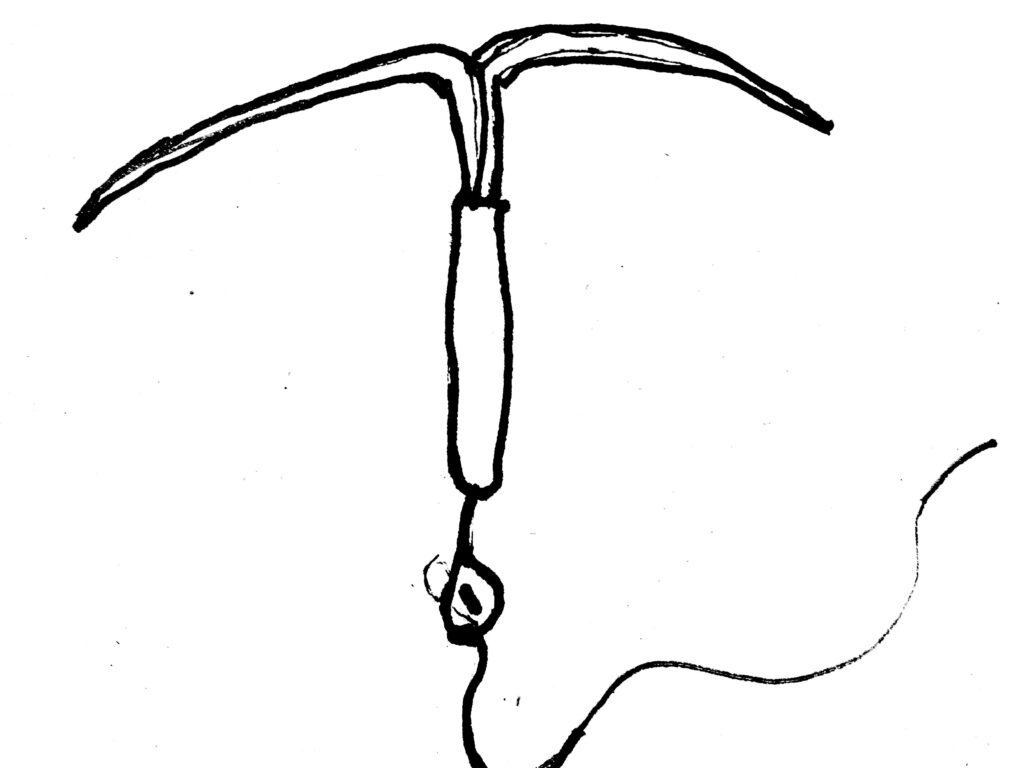
I’ve been noticing a trend in my practice, which places an emphasis on women’s hormonal health and mental health. Many women are consulting me for treatment of anxiety and panic attacks that have shown up in addition to other hormonal symptoms: painful periods, PMS, headaches, loss of libido, acne and weight gain. It just so happens that these women have also, for either treatment or contraception purposes, inserted a Mirena IUD, an intrauterine device that secretes small amounts of progestin (a synthetic form of progesterone) into the uterus.
The monograph for Mirena—produced and supplied by Bayer Pharmaceuticals—claims that Mirena is 99% effective for preventing unplanned pregnancy. Bayer informs us that Mirena can last in the uterus for up to 5 years and eliminates the need for daily pill-popping or condom use (although it does not protect against STIs). In addition, it is also an effective treatment for heavy menstrual bleeding. This explains why many women with gynaecological conditions, like endometriosis or fibroids, are recommended the Mirena IUD for alleviating symptoms of painful and excessive menstrual flow. Bayer’s claims, which are backed by evidence, make sense, especially when we consider that fibroids and endometriosis are estrogen-dominant conditions—adding more progesterone to the mix should help to “balance” things out. Incorporating a progestin-secreting device that acts on the uterus can help oppose the estrogen dominance that exacerbates the symptoms of these conditions.
The problem (of course there’s a problem, we’re talkin’ Pharma here) with Mirena is this: while the progestin exerts its effects locally, it does not act on the rest of the body. This may not be a “problem” with a capital P, if we understand that oral contraceptives that contain high progesterone are usually responsible for the “crazy” feelings women have when going on birth control—a lot of the “irritability”, weight gain, water retention and depression that women experience premenstrually is due to high levels of synthetic progesterone. However, we also know that progesterone, whose primary job is to maintain the uterine lining during pregnancy, has positive systemic effects. These effects include promoting mental relaxation and opposing estrogen dominance symptoms, which include weight gain, anxiety, panic attacks, fatigue, PMS, breast tenderness, acne, fibrocystic breast changes, cervical dysplasia, infertility, risk for certain cancers including breast cancer and cervical cancer and worsening of endometriosis and fibroids, which ironically happen to be the two conditions that the Mirena IUD is prescribed to treat.
Estrogen dominance is often not about having high levels of estrogen, but normal estrogen levels with insufficient progesterone to oppose some of its effects. Progesterone deficiency can look like estrogen dominance, when we examine a patient’s symptoms.
In my practice as of late, I’ve had a stream of women presenting with anxiety, panic attacks and heart palpitations that I strongly suspect are hormone-related. When I send them for blood work or salivary hormone tests I find that their progesterone levels are very low. They also may have symptoms of painful menstrual periods, stubborn weight gain and acne. And, you guessed it, all of them have the Mirena IUD. Many patients vaguely remember that symptoms began to rear their ugly heads, or worsen, after they got the IUD. Other colleagues have commented on observing the same trend in their own practices. Could the phenomena be linked?
There are several possible explanations for the progesterone deficiency/estrogen dominance phenomenon in clinical practice—these include, but are not limited to, chronic stress, vitamin deficiencies, impaired liver function or bowel function and exposure to exogenous estrogens such as BPA (found in plastic bottles, personal care products, the lining of tin cans and receipts, to name a few). Yet it seems that Mirena is a common factor in the majority of the cases I’m seeing. The possible reason is that, although Mirena provides progestins to the uterus, its hormones do not reach progesterone receptors in other areas of the body, for example the breasts, adipose tissue or brain, where progesterone normally will have an effect. While oral contraceptives act by preventing ovulation (some women don’t even menstruate while using the IUD), which in turn prevents the secretion of natural progesterone from the corpus luteum (formed in the ovary after ovulation), many of them also supply a dose of synthetic progesterone. Since the Mirena IUD only secretes progesterone to local tissues and therefore only acts at local receptors, it may be turning off the body’s ability to secrete natural progesterone—negative feedback loops might instruct the pituitary gland and the adrenal glands to stop making the body’s own progesterone.
As an naturopathic doctor, it can be hard to know where to proceed! I can try to balance hormones naturally with herbs that help promote an increase in progesterone production. I can also treat the adrenal glands so that they are able to produce more natural progesterone, rather than favouring cortisol production. However, not only might my efforts be fruitless, they may interact with the IUD’s contraceptive effects. I can try to promote the healthy excretion of estrogens by promoting liver detoxification and colon elimination, but the practice calls to mind an image of cleaning a dirty river while sewage pipes deposit their waste into it. How can my patients help their bodies clear out excess hormones while we both ignore the fact that the cause of hormonal deficiency may still persist?
While I sympathize with the allure of a hassle-free family-planning method and relief from the symptoms of heavy and painful periods, I can’t help but shudder when I see the often debilitating anxiety that my patients who use Mirena are presenting with. With regards to birth control, I have written in the past about healthy OCP practices and finding the right hormonal fit. There are also other, natural methods of family planning available, copper IUDs (however, there are other issues with the secretion of copper to local uterine tissue as well) and physical barriers. While other options may not be as convenient, or even as effective, they may promote a healthier hormone balance and improved overall health. It’s worth having a conversation with your doctor about options.
With regards to treating heavy menstrual bleeding with Mirena, natural alternative solutions are abundant! Naturopathic medicine offers a large array of therapies and treatment protocols aimed at treating the root cause: promoting healthy detoxification and elimination, supporting adrenal glands and balancing hormones through diet and nutrition. Not only does Mirena pose the potential for furthering hormonal imbalances, it covers up and even potentially exacerbates the underlying cause of why the symptom is happening in the first place, which is likely a case of estrogen dominance.
For treatment of hormonal conditions—endometriosis, fibroids, heavy and painful menstrual bleeding, PCOS, acne, weight gain and so on—I encourage you to explore natural options. In the meantime, I’ll have to figure out how to address my patients’ concerns while navigating against the current of synthetic hormones.
Want to balance your hormones, energy and mood naturally? Check out my 6-week foundational membership program Good Mood Foundations. taliand.com/good-mood-learn
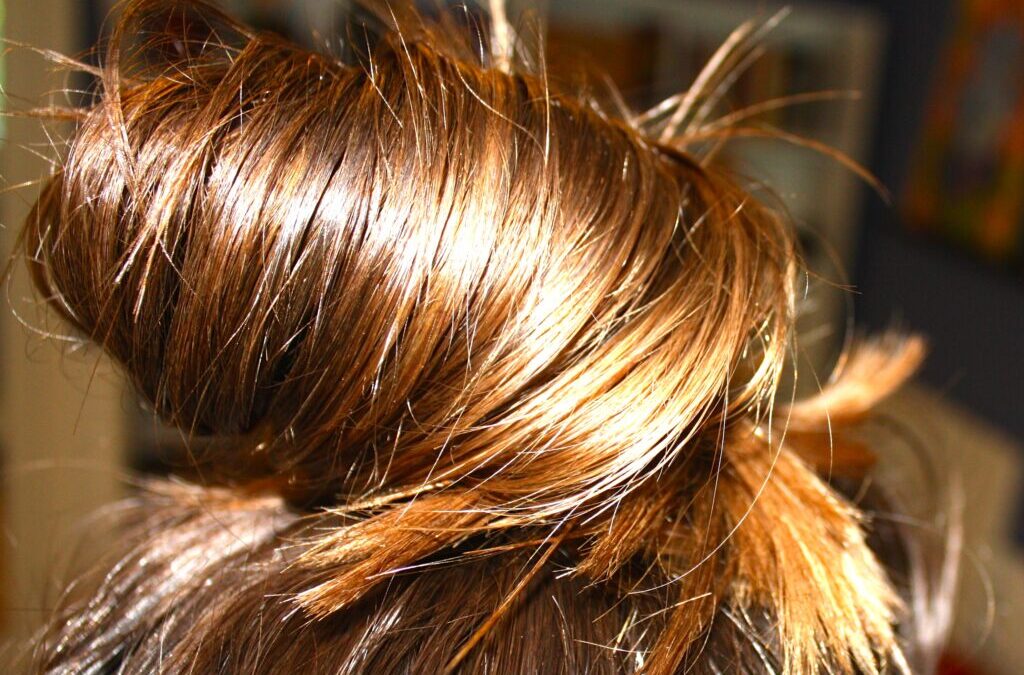
by Dr. Talia Marcheggiani, ND | May 16, 2015 | Autoimmune, Beauty, Diet, Digestion, Education, Food, Food Sensitivities, Hair, Health, Hormones, Natural Body Care, Nutrition, Self-care, Women's health
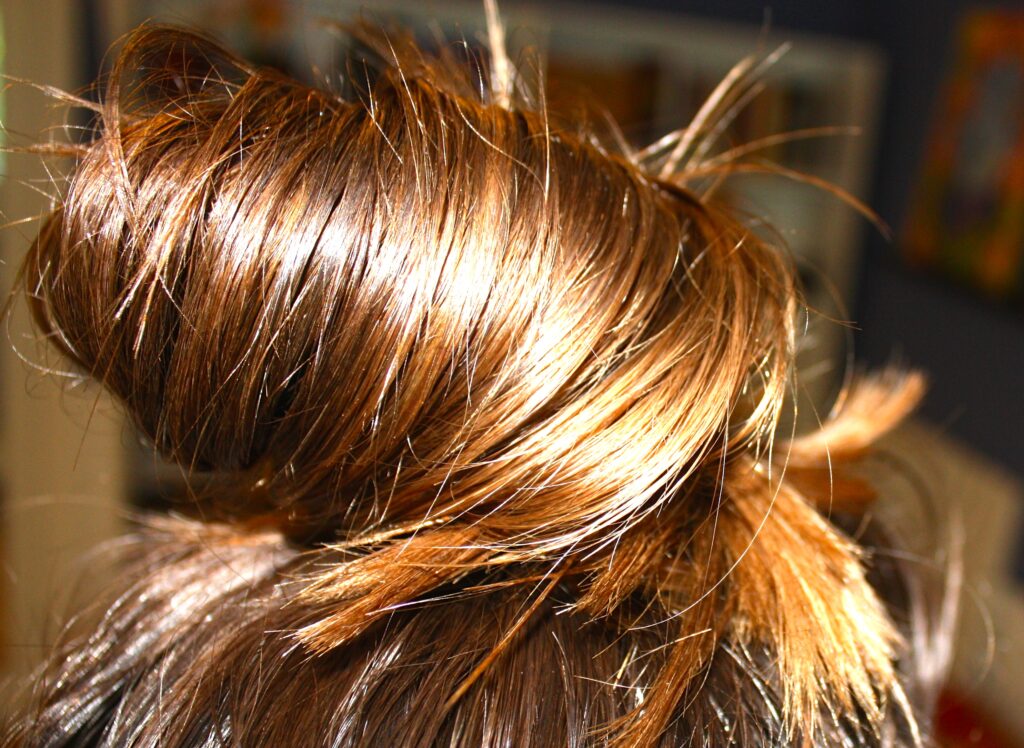 This is likely one of the shallowest posts I’ll ever write—it’s about hair. However, what is so shallow about hair? We all know the importance of having a good hair day. It seems from the moment we wake up, look in the mirror and notice that our top bun has left proper, succulent waves and not weird, irregular angles of frizz, that the rest of the day will be infused with magic. Our hair plays a huge role in who we are and how we see ourselves. When movie characters want to change their identities, the first thing they do is stash themselves in a truck stop bathroom with a box of hair dye and go to town on their manes. Further, and admittedly sticking to the shallow side of things, I’m often suspicious when every photo of a man on Ok Cupid shows himself wearing a hat—what on earth is he hiding? At any rate, concerns about hair health gets people, namely women, into my office. Sometimes seemingly shallow, trivial health concerns act as gateways to lifestyle changes and a journey to health and wellbeing. Since our bodies don’t really require hair for survival, hair health, along with sex drive and energy, is one of the first things to decline when we enter into a state of imbalance. It therefore becomes an important initial warning sign that things have gone array with our health.
This is likely one of the shallowest posts I’ll ever write—it’s about hair. However, what is so shallow about hair? We all know the importance of having a good hair day. It seems from the moment we wake up, look in the mirror and notice that our top bun has left proper, succulent waves and not weird, irregular angles of frizz, that the rest of the day will be infused with magic. Our hair plays a huge role in who we are and how we see ourselves. When movie characters want to change their identities, the first thing they do is stash themselves in a truck stop bathroom with a box of hair dye and go to town on their manes. Further, and admittedly sticking to the shallow side of things, I’m often suspicious when every photo of a man on Ok Cupid shows himself wearing a hat—what on earth is he hiding? At any rate, concerns about hair health gets people, namely women, into my office. Sometimes seemingly shallow, trivial health concerns act as gateways to lifestyle changes and a journey to health and wellbeing. Since our bodies don’t really require hair for survival, hair health, along with sex drive and energy, is one of the first things to decline when we enter into a state of imbalance. It therefore becomes an important initial warning sign that things have gone array with our health.
Hair loss is often a concern for many women and men. It’s normal to notice a few strands of hair in the shower—the average woman loses about 50 to 100 strands of hair per day. However, when patches of hair seem to be missing, areas of thinning are present or a reduction in overall hair volume (usually indicated by a decrease in thickness of the pony tail), this can point to possible pathological hair loss.
In the quest to address concerns about hair loss, the choice of shampoo becomes a crucial element in maintaining scalp health. Opting for a sulfate free shampoo for oily scalp emerges as a thoughtful strategy to navigate this common challenge. This type of shampoo not only gently cleanses the hair but also ensures that the scalp’s natural oils are preserved, striking a balance that is particularly beneficial for those experiencing issues like thinning or reduced hair volume.
While losing a few strands daily is normal, unusual patterns of hair loss can signal pathological conditions that may require medical attention. For those seeking effective solutions, advancements in the field of hair restoration, such as hair transplant procedures, have become increasingly popular. In Seattle, individuals concerned about hair loss often explore options like hair transplants, which can provide a natural and lasting solution to restore hair density. It’s essential to consider factors such as seattle hair transplant cost along with the expertise of professionals to make an informed decision about addressing hair loss concerns. Seeking appropriate medical advice and exploring suitable treatments can help individuals regain not only their hair but also their confidence and overall sense of well-being.
History and Labs:
When coming in to see your naturopathic doctor, he or she may ask you the following questions:
Do you notice any itchiness or flaking of the scalp? These symptoms could indicate a number of skin conditions of the scalp that contribute to hair loss: seborrheic dermatitis, infection by a fungus called Malassezia furfur that causes dandruff, or psoriasis of the scalp, an autoimmune condition. The ND may diagnose via trial-and-error or perform skin-scraping to rule out a fungal infection. A skin biopsy may be indicated to provide a definitive diagnosis, however this test is invasive.
What do you labs look like? Comprehensive lab work is necessary in patients with hair loss. It’s important to see what iron status is, as well as thyroid health. Low iron or under-functioning thyroid can be the root cause of hair loss as can high androgens, the male sex hormones.
Which medications are you taking? Oral contraceptives can cause a deficiency in vitamins and minerals, such as zinc and B vitamins, that can cause hair loss. Other medications that can cause hair loss include, and or not limited to, blood pressure medications, antidepressants, antibiotics, acne medications, chemotherapeutics agents, immunosuppressants and pain medications. An ND can work with your doctor to decrease your list of medications by addressing the root cause of concerns, if possible, or collaborate in switching medications. This, of course, will only be done in collaboration with the prescribing doctor.
What’s bugging you? Stress can contribute significantly to hair loss. The mechanism of action is varied, but a decrease in circulation to the scalp, protein deficiency and depletion of vitamins used by the adrenal glands, can be possible causes of hair loss. Telogen effluvium is a condition where the body pushes the hair follicles into a “resting phase” so that they no longer grow and produce hair. This is done because when under stress, the body enters survival mode and does not dedicate precious resources to non-survival entities such as hair health. Alopecia areata an autoimmune condition in which the immune system of the body attacks the hair’s follicles, causing large patches of hair to fall out. This is said to be cause or aggravated by severe stress. Trichotillomania is a mental health condition in which the individual plucks out hair as a self-soothing mechanism.
What are you other symptoms? Weight gain, irregular periods, acne and hair growth on the face can indicate PCOS, which also can cause loss of scalp hair due to higher-than-normal testosterone levels. Men with high testosterone will also experience more hair loss. Digestive symptoms can indicate malabsorption of important fat-soluble vitamins or iron, which can contribute to hair loss if resulting in deficiency.
What hair products do you use? A sensitivity to sulphates and/or other chemical additives to hair products can contribute to hair loss or a decrease in the lustre and overall health of hair follicles.
Treatment:
The naturopathic treatment for hair loss, involves identifying and treating the root cause of symptoms, not the hair loss itself. A potential treatment plan might consist of the following:
Restoring health by replenishing depleted or deficient vitamins and minerals.
Eliminating infection or scalp fungus if necessary.
Managing stress in healthy, constructive ways.
Balancing hormones and the immune system via herbs, supplements and dietary changes.
Nourishing the hair by adding in vitamins that support hair health, such as fish oil. This also involves changing shampoos and conditioners to more natural, sulphate-free forms.
Castor oil hair mask:
Once a week, when my hair starts looking drier and duller, I do a castor oil hair mask and scalp massage. Castor oil is an anti-fungal and anti-inflammatory oil. It has the added benefit of increasing blood flow to the area it is applied to, in this case the scalp, which can increase hair growth. It is also a wonderful moisturizer and nutrient-rich hair supplement. It can help fuse together and moisturize split ends. Performing a self-scalp massage is a great way to increase body love by performing self care and has a grounding effect on the body, which reduces mental-emotional stress.
Apply a liberal amount of castor oil to palms. Rub oil into palms to warm it. Starting at the scalp, work oil into the hair follicles, applying a firm pressure and moving the fingertips in circles. Massage for 5 minutes, moving the oil through the shaft of the hair to the ends. After performing massage, leave oil in hair for at least an hour or overnight. Finally, shampoo and condition hair as usual to remove oil. Warning: castor oil can stain fabrics so sleep with an old pillowcase and wear an old t-shirt while performing castor oil scalp massages.
Epilogue: If you haven’t noticed, this seemingly shallow subject matter is the perfect segue into talking about a basic naturopathic approach, which involves taking a thorough history, ordering lab work to find the root cause of symptoms and then treating accordingly using non-invasive therapies that aim to treat the cause, not just the symptoms themselves. Notice how this is vastly different from walking into a supplement store and purchasing a product called “Hair Loss Formula” or some other facsimile. While this formula may replenish some deficient vitamins, it is masking the real cause, which may be PCOS or celiac disease, and delay effective treatment for these conditions. Hopefully this highlights the importance of seeking a professional opinion rather than self-diagnosing and self-prescribing!
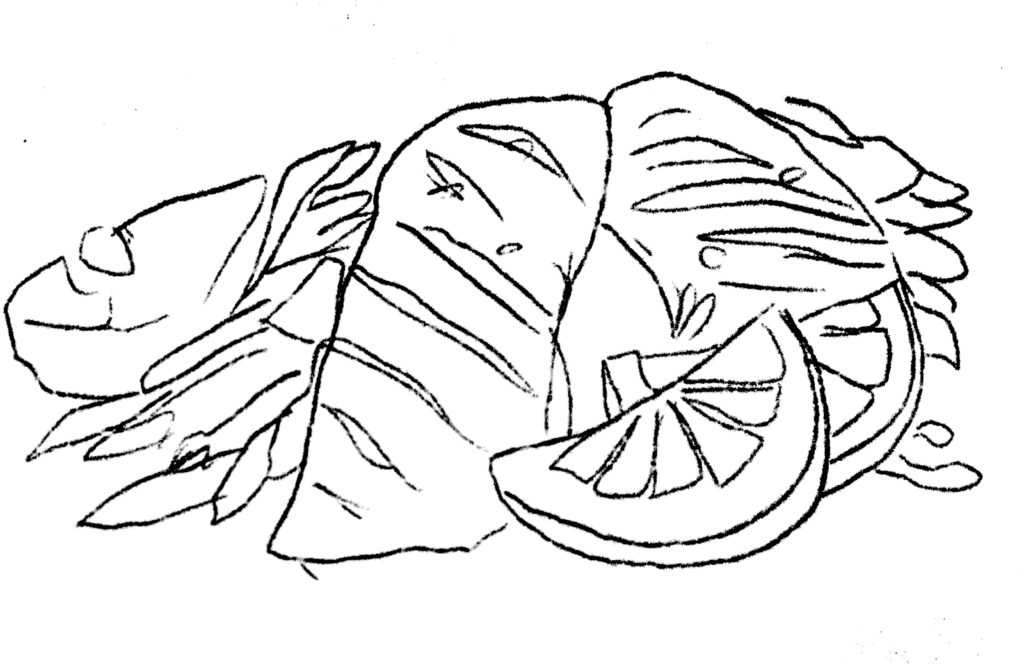
by Dr. Talia Marcheggiani, ND | Apr 21, 2015 | Botanical Medicine, cancer, Detoxification, Diet, Endocrinology, Fertility, Food, Health, Mental Health, Nutrition, Skin health, Weight Loss, Women's health
 Estrogen is the dominant female hormone. It is actually a group of hormones, called the estrogens, that are responsible for the development of female secondary sex characteristics: the development of breast tissue and the proliferation of the uterine lining. Estrogen helps prepare the body for ovulation. Not all estrogens are created equal, however. Some estrogens are associated with an increased risk of certain female cancers, such as breast cancer.
Estrogen is the dominant female hormone. It is actually a group of hormones, called the estrogens, that are responsible for the development of female secondary sex characteristics: the development of breast tissue and the proliferation of the uterine lining. Estrogen helps prepare the body for ovulation. Not all estrogens are created equal, however. Some estrogens are associated with an increased risk of certain female cancers, such as breast cancer.
Excess estrogen, especially in the form of these so-called “bad” estrogens, seems to be a common theme among women in North America. Stress, caffeine intake, synthetic estrogens in birth control pills and hormone replacement therapy and xeno-estrogens from cleaning products, plastics and cosmetics are among some of the causes of excess levels of estrogen in the body. Because of these environmental factors, many women suffer from something called “Estrogen Dominance”.
Symptoms of estrogen dominance include stubborn weight gain, anxiety, premenstrual symptoms of breast tenderness, acne, irritability, fatigue and brain fog. Estrogen dominance can contribute to worsening of health conditions such as infertility, fibrocystic breasts, repeated miscarriages, uterine fibroids and endometriosis as well as increase the risk of developing certain cancers.
Estrogen detoxification can be done effectively through a healthy diet that aims at improving estrogen clearance in the liver and regulation of the action of estrogen at cell receptors. By following this diet, patients can experience an improvement in hormonal health conditions, clearer skin and weight loss.
This diet is adapted from Dr. Joseph Collins RN, ND at yourhormones.com.
Cruciferous vegetables: Vegetables from the cabbage family, such as cabbage itself, cauliflower, broccoli, brussel sprouts, kale, bok choy, spinach, collard greens and other leafy greens are rich in a nutrient called indole-3-carbinol, or I3C. I3C gets converted to diindolymethane (DIM) in the body, which is responsible for clearance of excess estrogens in the liver. Consume a minimum of 3-4 servings of these vegetables per week.
Rosemary: Rosemary, when added to meats as a seasoning enhances the formation of good estrogens (the ones less likely to cause cancer or health concerns). Rosemary has the added benefit of antioxidant activity. It also enhances memory and mood and helps with thyroid function, improving weight loss, metabolism and energy levels.
Flaxseed: 2-4 tablespoons per day of ground flaxseed promotes healthy estrogen metabolism. The seed contains lignans, which help clear excess estrogens from the body. Flax also contains phytoestrogens, which control how much estrogen can bind to estrogen receptors. This means it can decrease excess estrogen activity or increase deficient estrogen activity, making it an effective remedy for a variety of female health complaints. Flax is rich in healthy omega-3 fats and contains fibre, making it an important remedy for treating inflammation and constipation. Flaxseed is digested and absorbed when ground, and best stored in the fridge as the oils in the seed quickly go rancid at room temperature.
Salmon and other fatty fish: Salmon and other fatty fish contain EPA, an omega-3 fatty acid, is an important anti-inflammatory oil. It has been shown to be effective in treating inflammatory conditions, cardiovascular disease and mental health conditions, such as depression, anxiety and ADHD. It helps increase the formation of “good” estrogens in the body. Enjoy 2-3 servings of fatty fish per week, or supplement with a quality fish oil.
Isoflavones: Isoflavones, such as those found in soy, are antioxidants effective at increasing good estrogens in the body. Since soy is often heavily processed, using herbs such as Trifolium pratense, Pueraria montana and Pueraria lobata either in teas, capsules or tinctures, will help provide an adequate dose of isoflavones.
Activated folic acid: Folic acid is responsible for converting estrogen into a very healthy, methylated form that can decrease the risk of certain cancers. Many people are unable to convert folate into the active 5-methyltetrahydrofolate, which is essential for hormone metabolism, DNA synthesis, homocysteine metabolism and nervous system function (good mental health, memory and energy). Other B vitamins to supplement with are B6 and B12 as they help folic acid metabolism estrogen into their anti-cancer form. Folic acid is found in dark leafy greens, which also contain your daily doses of indole-3-carbinol.
If you are experiencing symptoms of estrogen dominance in the form of a female health complaint, book an appointment to learn what else you can do to experience healthy, happy, pain-free periods and look and feel your best. Contact me.
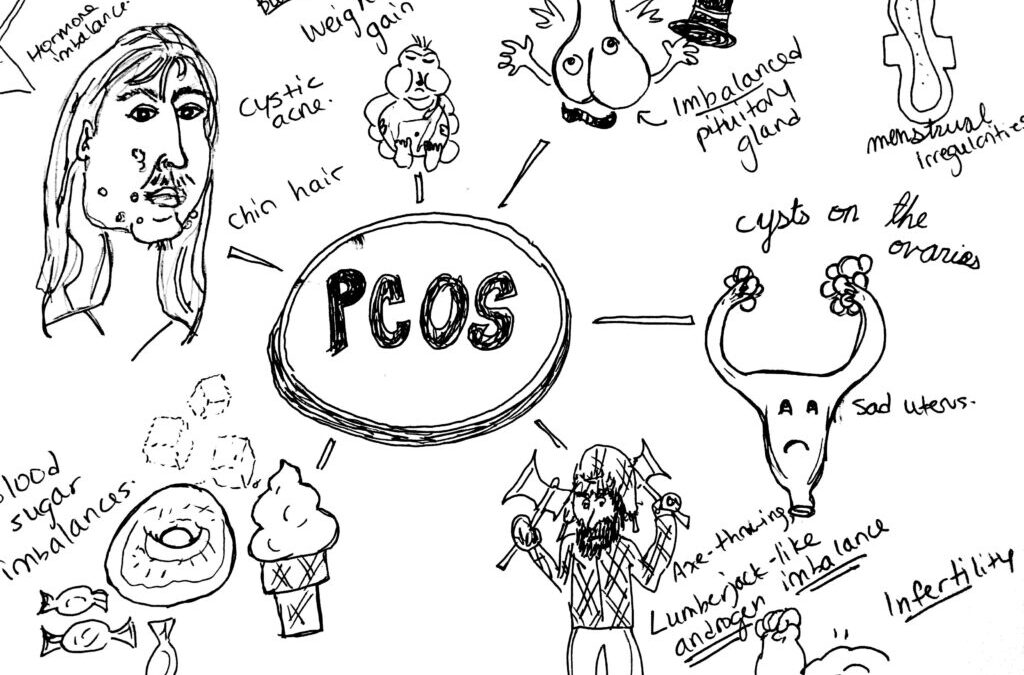
by Dr. Talia Marcheggiani, ND | Mar 19, 2015 | Creativity, Diet, Endocrinology, Exercise, Fertility, Health, Lifestyle, Medicine, Mind Body Medicine, Nutrition, Paleo, Sex, Sexual Health, Skin health, Weight Loss, Women's health
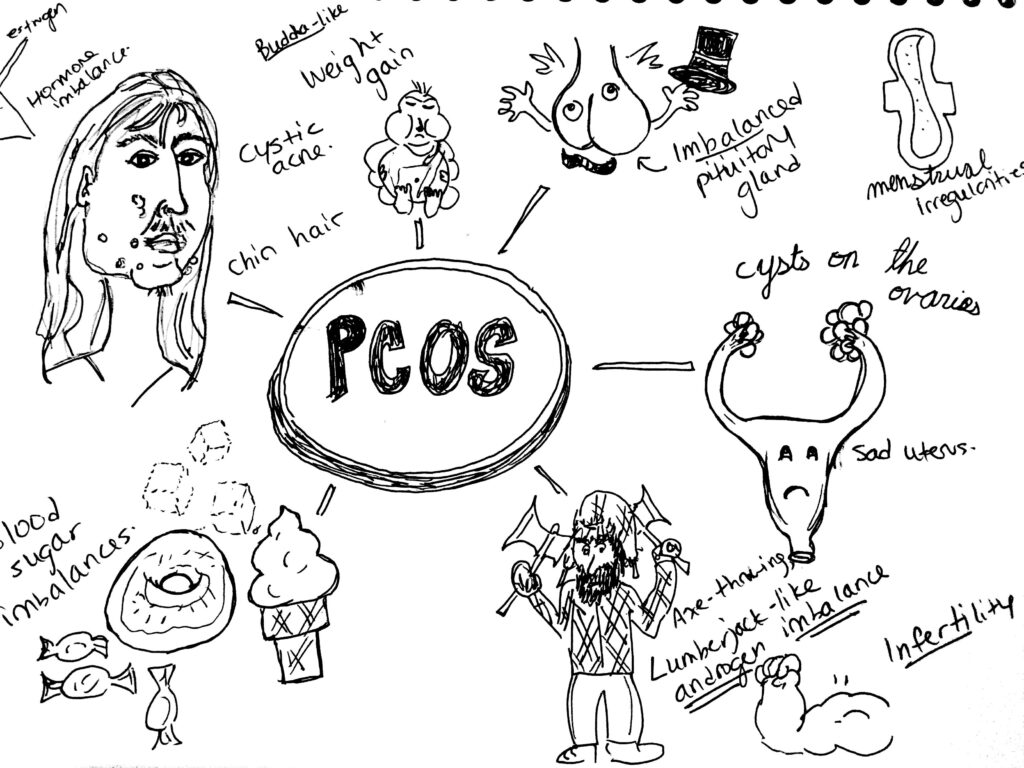 PCOS, or Polycystic Ovarian Syndrome, a condition which affects an estimated 10% of women in North America and is the most common endocrinological dysfunction in women.
PCOS, or Polycystic Ovarian Syndrome, a condition which affects an estimated 10% of women in North America and is the most common endocrinological dysfunction in women.
Its symptoms and the people it affects are as diverse as there are people affected; it’s one of my favourite conditions to treat.
Signs and Symptoms:
PCOS is characterized by hormone dis-regulation. Oftentimes it presents with cysts on the ovaries, but not always. In PCOS there is often elevated blood glucose and other markers of insulin resistance. There are often issues with menstruation: the absence of periods (amenorrhea), or heavy and irregular bleeding (dysmenorrhea). Weight gain is common—although some women with PCOS can be thin—as is hormonal acne and hirsutism, a nice word for male-pattern hair growth: excess hair growth around the chin and upper lip, the chest or navel region. Pelvic pain around ovulation may occur when cysts rupture. Infertility is common in women with this condition.
PCOS is a syndrome, rather than a disease, which means it presents as a collection of symptoms that can be varied in their presentation and severity. Lab work may read that estrogen, testosterone and LH (a hormone produced by the pituitary gland and ovaries) are high and progesterone and FSH (a hormone released by the pituitary gland) are relatively low. However, what brings a woman with PCOS or PCOS-like symptoms into my office is varied and usually consists of any combination of visible symptoms: hair growth, weight gain, acne, menstrual irregularities or infertility.
Etiology:
We are uncertain how the collection of symptoms that is PCOS arises. One prominent theory is that issues with blood sugar and insulin regulation create ovarian cysts or disruptions in the secretion of sex hormones. This causes the ovaries to release more LH, which has the power to raise testosterone. High insulin, testosterone and estrogen can cause weight gain, hair-growth, acne, absence of ovulation (anovulation) and the inability to maintain the uterine lining and therefore carry a pregnancy to term.
Diagnosis:
PCOS is diagnosed by symptoms. It involves a combination of symptoms: amenorrhea (or absence of menstrual periods), infertility, hair growth on the face, acne and insulin resistance. The presence of ovarian cysts, as detected on an ultrasound were once diagnostic, but many patients present with symptoms and are cyst-free. An increase in LH and testosterone, with lab values indicating insulin resistance and metabolic syndrome, can also lead doctors to suspect PCOS, when appearing in conjunction with other symptoms.
Because it is a syndrome, patients often come into my practice with a variety of complaints. Some come in to deal with their skin health, others want help with fertility or menstrual cycle regulation and many others come in with weight loss goals.
Conventional Treatment:
Treatment in conventional medicine is simple: oral contraceptives. If your testosterone is high and estrogen and progesterone are out of whack, the conventional medical system tells us to simply override natural hormone production, or lack thereof, with synthetic versions of the same thing. For my professional opinion on regulating hormones with oral contraception, see my post on the birth control pill (which I no longer take). These birth control pills often contain chemicals that prevent the secretion of male hormones. This helps clear up acne and hair growth.
Medication for type II diabetes, Metformin, is used to help regulate insulin. Patients experience weight loss on Metformin, as it helps control insulin resistance, however it also depletes vitamin B12, which means that regular injections of B12 are necessary to avoid deficiency symptoms. Further, Metformin doesn’t address the root cause of insulin resistance, which is most likely lifestyle and hormonal imbalance. This means that patients will be medicated (and therefore receiving B12 injections) for life.
I do not mean to negate the fact that oral contraception and Metformin have helped countless women. I respectfully acknowledge the fact that the lens I look through is one of a different, more natural and whole-bodied approach to medicine that aims to treat the individual by addressing the root cause of disease.
In short: I prefer to try it the naturopathic way first.
Naturopathic Treatment:
Lifestyle. Naturopathic remedies are very effective, but often quite involved. They begin with lifestyle modifications—a low glycemic index diet like the Mediterranean or the Paleo diets, that emphasize whole foods, like fruits, vegetables, healthy fats and lean protein and eliminate sugar, white flours and white carbohydrates. Exercise is important in treating PCOS. One of my professors advocates intense cardio, such as high-intensity interval training, or weight-lifting 5-6 days a week. This must be done for several months before effects are seen and blood sugar and other hormones are regulated.
Supplementation and botanicals. Myo-inositol, a B vitamin, is a first-line treatment for PCOS in the natural health world. The amount of research steadily growing behind its use should probably make this gentle and effective treatment first-line for treating PCOS in all healthcare fields. Studies show that, when dosed properly, inositol can regulate blood sugar, assist with weight loss and regulate menses, even promote fertility.
Herbs like Vitex agnus-castus, or chaste tree, can help regulate the balance between estrogen and progesterone. Spearmint and Serenoa repens, or saw palmetto, can help decrease male hormones in the body. Gymnema and berberine are other therapies useful for regulating blood sugar and helping with weight loss.
Ensure that you are receiving counsel from a licensed naturopathic doctor before supplementing. The dose and quality of supplements and herbs is essential to feeling better—don’t hack it in the health food store alone!
Acupuncture. Acupuncture has been shown to be effective for promoting fertility. I have had some good success in promoting pregnancy and fertility with acupuncture in my practice. Fertility clinics in Canada now use acupuncture before and after IVF treatments to ensure treatment success. It also helps to relieve stress and lower cortisol, which helps with insulin-lowering and blood sugar management.
In Traditional Chinese Medicine, PCOS can manifest as dampness, Qi or yang deficiency or issues with the Spleen or Kidneys. Acupuncture can help tonify and balance these patterns.
Homeopathy. I have had success using homeopathy in conjunction with lifestyle and supplementation in treating PCOS. Homeopathy acts deeply on the energetic level of disease, working on the level of emotions and sensations and working to address the energetic cause of disease. It involves a thorough interview and an individualized prescription from a licensed naturopathic doctor or homeopath.
Mind-Body Medicine. The ovaries are located at the level of the second chakra, which is an energetic centre in the body associated with sexuality and creativity. Christine Northrup, MD, asserts that the presence of ovarian cysts represents an energetic blockage in our creative power and unmet emotional needs. Louise Hay, author of “You Can Heal Your Life” tells us that ovarian cysts represent some sort of past hurt that we can’t let go of. Crying, journalling and identifying repressed emotions can help to remove these energetic blockages. In many women with PCOS, there is an imbalance in the identification with their femininity, or what it means to be a woman.
Sometimes our bodies alert us of imbalances in our emotional lives through the presence of physical symptoms. As a naturopathic doctor, it is essential I address all levels of the person—mentally, emotionally and spiritually, not simply physically.
PCOS is a diverse and challenging condition to treat that can cause a lot of hardship for the women who suffer from it. However, a diagnosis of PCOS can be an opportunity for growth and transformative healing through naturopathic medicine. For this reason, I find it can be one of the most interesting and rewarding conditions to treat. Contact me to find out more.
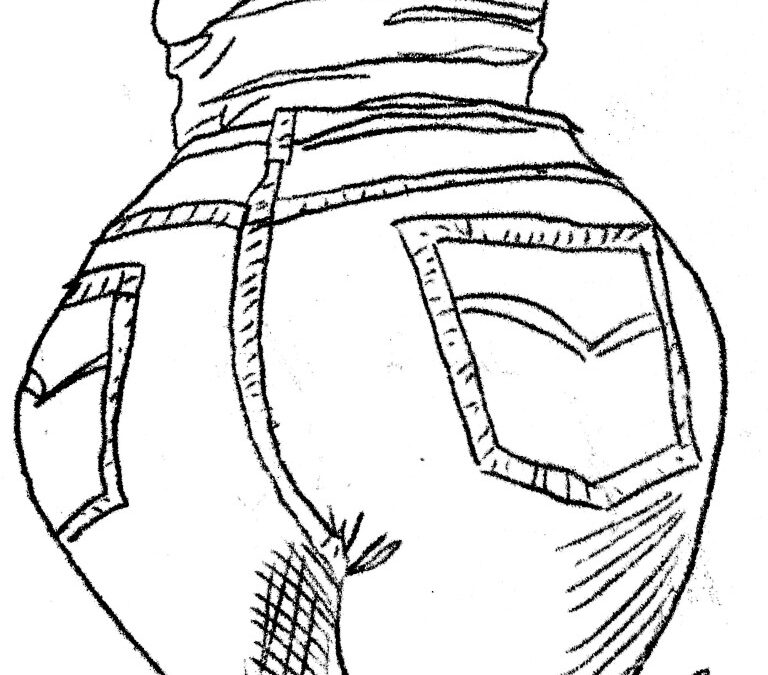
by Dr. Talia Marcheggiani, ND | Nov 20, 2014 | Acupuncture, Balance, Beauty, Book, Chronic pain, Healing Stories, Listening, Mental Health, Mind Body Medicine, Mindfulness, Preventive Medicine, Psychology, Self-care, Self-esteem, Self-reflection, Weight Loss, Women's health
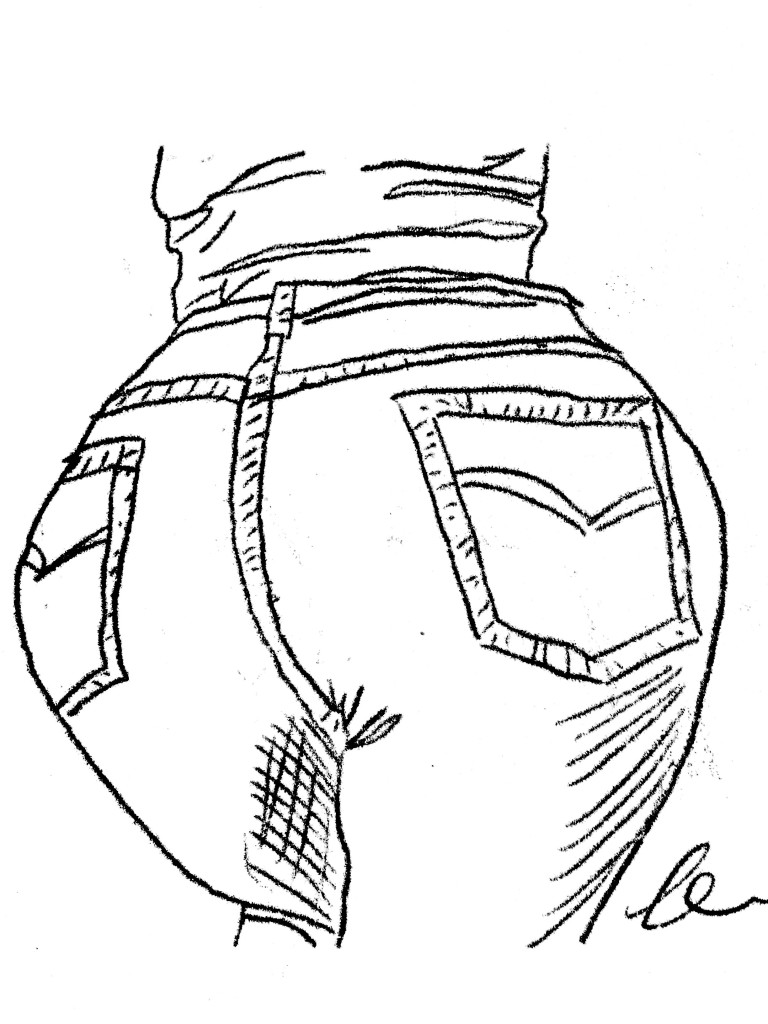 I am in my grade 12 photography class. I am 17 years old. I have my head on the desk in abject despair, as I succumb to the intense stress that was my last year of high school, where every academic move I made would dictate my future. I remember catching sight of my thighs nestled on the hard-backed plastic chair beneath the desk. And, although my struggles in that moment were seemingly unrelated to my body, I remember feeling a sense of satisfaction as I made a mental note of how the once-curvy lines of my thighs were straightening themselves out, flattening and loosening some of the fat that cushioned my thigh bones. From this satisfaction, I drew a sense of calm; I was losing weight, therefore things would be all right. The notion sounds ridiculous now but, at the time, I associated thinness with all the things I valued: friendship, love and even success. These things could only take place in someone inhabiting a thin body. I would, naturally have to complete the prerequisite of achieving “thinness” before I could have any of those things. This belief, rather than creating a connection between the rest of my life and my experience in my body, only served to fragment my bodily experience, as I tried to form my shape into the mould I thought it should inhabit.
I am in my grade 12 photography class. I am 17 years old. I have my head on the desk in abject despair, as I succumb to the intense stress that was my last year of high school, where every academic move I made would dictate my future. I remember catching sight of my thighs nestled on the hard-backed plastic chair beneath the desk. And, although my struggles in that moment were seemingly unrelated to my body, I remember feeling a sense of satisfaction as I made a mental note of how the once-curvy lines of my thighs were straightening themselves out, flattening and loosening some of the fat that cushioned my thigh bones. From this satisfaction, I drew a sense of calm; I was losing weight, therefore things would be all right. The notion sounds ridiculous now but, at the time, I associated thinness with all the things I valued: friendship, love and even success. These things could only take place in someone inhabiting a thin body. I would, naturally have to complete the prerequisite of achieving “thinness” before I could have any of those things. This belief, rather than creating a connection between the rest of my life and my experience in my body, only served to fragment my bodily experience, as I tried to form my shape into the mould I thought it should inhabit.
Fast-forward more than 10 years later. There is a sale at a store I used to frequent as a teenager. Since all my jeans have the coordinated foresight to spring holes at the same time (between the thighs, naturally), I decide to go in and try on some pants. When I realize that I take a full two sizes smaller than the last time I ever slid this brand of jeans over my hips, my chest is filled with the same contented bubbling I experienced that afternoon in photography. The anxiety of my future – my career, my empty wallet and my relationship -relaxes. I walk out with two pairs.
I am wearing the jeans on the subway when I run into my former boss. She and I chat about the weather and the school and she tells me that her young daughters refuse to wear pants because “they encumber their knees at circle time.” We chuckle at the humor of the situation and my mind travels to my closely wrapped thighs, feels the snugness of denim surrounding them. For me, pants serve as a container for the flesh that threatens to spill out of them. I remember wondering when my definition of “comfort” evolved from the freedom of the body to expand, move and breathe to this feeling of secure confinement I experience inside my jeans. I doubt these pants would allow my knees to properly stretch themselves out and bend at circle time. Luckily, when you’re pushing 30, you get to sit in chairs while people tell you stories.
As a naturopathic doctor, I preoccupy myself with the relationship our bodies have with our environment and lifestyles: how do the products we use affect our hormones? How does the food we eat and the movement we engage in affect our internal terrain? How does our mindset prevent disease? What I often don’t ask is how the learned relationship one has with their body affects health. Does the way I view my lower body cause me to engage in behaviours that affect my health? How are my tight jeans impeding lymphatic flow? How do they affect my digestion? Does my sense of self-worth affect my blood sugar? The answer is it absolutely can, if my sense of self-worth causes me to ignore my body’s food cravings and hunger signals. The way we treat ourselves and imagine our own health stems from our relationships with our bodies, which in turn dictates our future health states.
Susie Orbach, a feminist psychotherapist and author, once wrote that female babies are breastfed for less time, and picked up and cuddled less than male babies. She goes on to describe how this early treatment of women, “characterized by emotional deprivation and feelings of unentitlement”, secures the female’s place as a second-class citizen in society. More than that it teaches women to disconnect with our bodies. If our needs are not met at an early age, we are led to believe that these needs are wrong. We are taught to ignore the smelling, farting, bleeding, overflowing, curving bodies we are born with and try to recreate a “false body” that is perfect and that begins to believe it is “comfortable” being squeezed and starved and stuffed into pointy-toed shoes. Or we simply develop the ability to de-identify with the discomfort. This mechanism can lead to injury or disease if we fail to truly listen to what our bodies are trying to alert us to. (Matthew Remski writes about this extensively in his amazing research project on yoga injuries called What Are We Actually Doing in Asana (WAWADIA). I’ve been devouring his articles this week).
Orbach goes on to theorize that the symptoms the body produces in a disease state just might be a cry for help; the body is attempting to insist on its existence, to demand to be heard. So what then are menstrual cramps? Are they simply a result of inflammation or a hormonal imbalance caused by lifestyle or are they attempts made by the body to cry out, “I am female! I am menstruating! I am in need of attention!”
I remember a patient I had who would deny herself life pleasures. Convinced she needed to lose weight, she would ignore her hunger signals, even proudly telling me that she would turn to her stomach and tell it to “shut up” when the grumbling became too loud. Her chief complaint was chronic pain. I wonder if her body’s pain was simply its way of telling her it existed. I wonder if she’d have found a way to sufficiently answer her stomach’s calling, the pain would have subsided. Perhaps by listening to the experience of our bodies we can start to properly take care of our health. We can start by wearing comfortable pants that don’t “encumber the knees”, moving naturally, embracing our sexual appetites, feeding ourselves the food we truly crave and answering the need for physical touch and rest.
In a society that tends to view the body as an object, a machine that sometimes gets jammed with inconveniences such as pain, menstrual issues and eczema, I wonder how our collective health would change if we began to experience the body as a tool for healing and self-growth – something inherently wise.
To share one last story, I remember sitting across from Teresa, our school counsellor, while I was still a naturopathic student. At the time I was deciding to break up with my then-boyfriend thereby ending a 5-year relationship. I told her I had never been clear on the difference between the fear and apprehension that came with seizing something good and the repulsed feeling of avoiding something bad. This has led me to make decisions in my life that weren’t necessarily right for me. She asked me to cultivate the two feelings and locate their positions in my body. “See if there is any difference,” She told me. As I tuned in I immediately noticed that fear was closer to my heart. It was higher up and it bore the faint pleasant glow of excitement behind its initial anxiety. Disgust was located lower down. It felt like a stomach ache, a sense of doom, of indigestion: a hard-to-digest truth. It was in this moment that I fully appreciated the body’s wisdom. The old adage “listen to your gut” began to ring true to me. My gut was sending me a message that was loud and clear, but it was up to me to listen to it.
So what are some exercises we can do to cultivate body awareness and re-inhabit our bodies?
– Practice regular body scan mediations, such as those prescribed by the Mindfulness-Based Stress Reduction (MBSR) model taught by Jon Kabat-Zinn.
– Try Susie Orbach’s “Mirror Exercise” in her book Fat is a Feminist Issue or spend 3 minutes a day for 21 days staring at a body part that you have a hard time identifying with. By staring at the nose you’ve always felt was too big on a regular basis, you are able to incorporate it into your sense of self and accept it as something beautiful, in the way you would come to love the same nose on your grandfather, daughter or dear friend.
– Set a timer every hour while at work to remind yourself to tune in to your body and your breath. Notice your feet planted on the floor and move your awareness up through your feet to the top of your head. Ask yourself if there’s anything your body needs: are you thirsty, hungry, bored or lonely? Do you need to stand up and stretch? Do you need a hug?
– Get regular acupuncture or constitutional hydrotherapy to help the flow of Qi through the body.
– Finally, touch yourself. Practice ayurvedic self-massages or apply a natural moisturising lotion or oil before bed. Practice self-care in the form of hydrotherapy. Even placing the hands over the heart and breathing into that area will help to release oxytocin, a hormone responsible for love and bonding, creating feelings of calmness and attachment to the physical body.
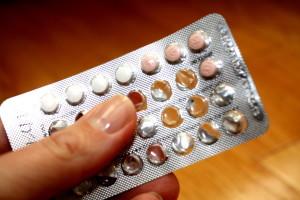
by Dr. Talia Marcheggiani, ND | Nov 7, 2014 | Endocrinology, Fertility, Hormones, Sexual Health, Sexuality, Weight Loss, Women's health
 There are many reasons to start using the birth control pill. Some of them are not-so-great: dealing with painful menstruation, acne, irregular periods or ovarian cysts – there are other, natural ways to manage these health concerns with fewer side effects and health risks! Some reasons for going back on the pill after a few-year hiatus are pretty awesome, like starting a new relationship. In other words, using the birth control pill for what it was designed for: birth control.
There are many reasons to start using the birth control pill. Some of them are not-so-great: dealing with painful menstruation, acne, irregular periods or ovarian cysts – there are other, natural ways to manage these health concerns with fewer side effects and health risks! Some reasons for going back on the pill after a few-year hiatus are pretty awesome, like starting a new relationship. In other words, using the birth control pill for what it was designed for: birth control.
I’m surprised to find that I’m hesitant to admit it publicly, but I’ve decided to go back on The Pill after considering various contraception methods; in natural health circles the Birth Control Pill is often seen as an unnecessary evil. However, Tori Hudson author of the Women’s Encyclopedia of Natural Medicine, has called oral contraceptives a “truly revolutionary option for women” and points out that the dose of estrogen and progesterone in the pill today is much lower than it was when it first arrived on the market. That being said, it’s important to talk to a healthcare provider to go over birth control methods and decide which one is right for you. Alternate options include physical barriers, such as condoms and diaphragms, cycle charting, apps, such as the Lady Comp, or IUDs, to name a few. Each method has its associated pros, cons, costs and health risks. Finding a safe and effective form of contraception involves you and your healthcare team.
For me, The Pill seems to be the best choice at the moment for various reasons, which I won’t get into here. However, the idea of ingesting synthetic hormones again, after having carefully brought my cycles back to a perfect, painless and PMS-free 28-day rotation and after having cleared up my hormonal acne, made me nervous. So, I did what all trained naturopathic doctors do; I used my naturopathic know-how to tailor an optimal Synthetic Hormonal Experience for myself. Going back on the pill needn’t come with undesirable side effects; maybe it could be a positive experience. Here are some tips:
Decide if oral contraception is your best method
Selecting the method of birth control that best fits your lifestyle, budget, health history and personal style requires an in-depth conversation between you and your healthcare provider. He or she should have a detailed conversation with you about your expectations, goals, sexual and health history as well as family history. Selecting the right method may also require some trial and error.
Consider the associated risks
A history of smoking and blood clots could put you at risk for dangerous side effects. The birth control pill is also associated with an increased risk of certain cancers. (And a decreased risk of uterine and ovarian cancers in the general, healthy population). Your personal risk profile will involve your personal health history and family history as well as lifestyle factors such as smoking. Talk to your healthcare provider.
Pick the right pill for you
Based on my history of suboptimal glucose control, hormonal acne and irregular periods, I knew that I needed a pill with the lowest dose of estrogen possible. My hormonal profile tends towards estrogen dominant and progesterone deficient so I chose a low-dose estrogen and high-dose progestin pill. The form of progestin used has zero androgen (male hormone) activity, therefore it is unlikely to contribute to acne. It also contains a diuretic, which combats my tendency to hormone-related water-retention. The combination of my knowledge of my personal hormonal profile and ability to research hormone combinations in various pills led me to choose a product that offered positive side-effects rather than negative ones. Since being on the pill again, I’ve experienced weight loss, rather than gain, lighter, more regular cycles and clearer skin. It’s worth repeating that these side-effects were not my motivation for going on the pill. If you are using the pill for symptom-management and hormone-balancing rather than birth control, consider trying natural methods instead.
Be prepared for trial and error-ing as hormone levels fluctuate
Give your new pill a 3-month trial period. During this period, be prepared for temporary side effects such as mood changes, skin outbreaks, temporary weight gain or water retention and break-through bleeding. Other common side effects of synthetic hormones are nausea and headaches. Allow 3 months for things to stabilize and, if still experiencing symptoms, talk to your healthcare provider about trying a new pill or birth control method.
Make sure to supplement to account for vitamin and mineral deficiencies
Oral contraceptives can deplete several key vitamins and minerals. The B vitamins folate, B6 and vitamin B12 are most notably affected. Deficiencies in these vitamins could lead to fatigue and depression or even neurological impairment. Magnesium, zinc and vitamin C levels are also affected, which can have an impact on the immune system. These minerals are important in a variety of metabolic processes. Since starting the pill again, I am diligent about taking my B-complex and magnesium supplements. Make sure you talk to your naturopathic doctor or other healthcare provider about choosing a quality supplement and dosing correctly, to make sure you are putting back in your body the nutrients that your pill may be depleting.
Hormone balance when coming off the pill
If you reach a happy medium with your pill, then congratulations! But, you ask, what happens if I decide to get pregnant or switch to another method of birth control? Work with a naturopathic doctor or your trusted healthcare provider to balance hormones with herbal or nutritional supplements when coming off of the pill. Herbs such as vitex, help regulate hormones and prevent side effects from the withdrawal of synthetic hormones.
For more information on balancing hormones and optimizing fertility, contact me.
This article is not a substitute for medical advice.
by Dr. Talia Marcheggiani, ND | Mar 27, 2014 | Body Image, cancer, Women's health, Writing
This piece was meant for the CCNM Body Monologues during the 2014 Women’s Health Week. It is an important story for me to tell, so I decided to finish the final edits and publish it here.
It was in Kingston, Ontario on the campus of Queen’s University, my alma mater, where I first met my roommate, C. We were both giddy with the nervous anticipation of coming face-to-face with the person we’d sleep beside for the next year. We were like two halves of a mail-order marriage; since divorce wasn’t an option, we were determined to make it work.
The pictures we pasted on the walls of our respective sides of the room highlighted the differences in our personalities and adolescent experiences. On her wall, there were sunny photos of rows of carbon copy, bikini-clad young women, posed in a way as to accentuate their lean abdomens and disguise obtuse hips. Their skin was bronzed from the sun. They could have been models. Why weren’t they models? I’m sure some of them were models. On mine, I plastered photos of my mishmash of weird friends. We wore sideways baseball caps, looked into the camera making cartoonish Zoolander faces or tucked our necks in to parody double-chins. We held up our hands in ironic peace signs. We emphasized our ugliness in order to assure our public that we were not trying to fit in. It was hilarious.
(more…)
by Dr. Talia Marcheggiani, ND | Mar 16, 2014 | Body Image, Book, Women's health
Women’s Health Week and International Women’s Day have both come and gone. At the Canadian College of Naturopathic Medicine, Women’s Health Week is usually accented with the popular event, the Body Monologues. Body Monologues, like its vagina-specific counterpart, consists of the telling of narratives on female body image. Every yearly event is filled with challenging, heart-felt, angry and inspiring stories by women as they articulate, through poetry, dance, speech and song, their personal struggles with femininity, sexuality, eating disorders, abuse and fight for body confidence. Sadly, this year, the Body Monologues was cancelled (you can still attend the main event in April 2014, in Toronto – click here for more information). However, even if the Monologue is cancelled, the dialogue must still persist; here are some of my favourite books in the world of female health that challenge the way we view femininity and our relationships with our bodies.
(more…)
by Dr. Talia Marcheggiani, ND | Sep 25, 2013 | Fertility, Health, Women's health
Imagine no longer being surprised by a menstrual period while on vacation, knowing the best time to have intercourse for those trying to conceive, and being aware of high-risk times for those trying to avoid unwanted pregnancy. For women with concerns about fertility, PMS and other menstrual symptoms, those with hormonal irregularities, those who are interested in a natural, yet effective form of birth control and those who are simply interested in learning more about their bodies and menstrual cycles, BBT Charting is an important holistic practice to adapt.
(more…)














